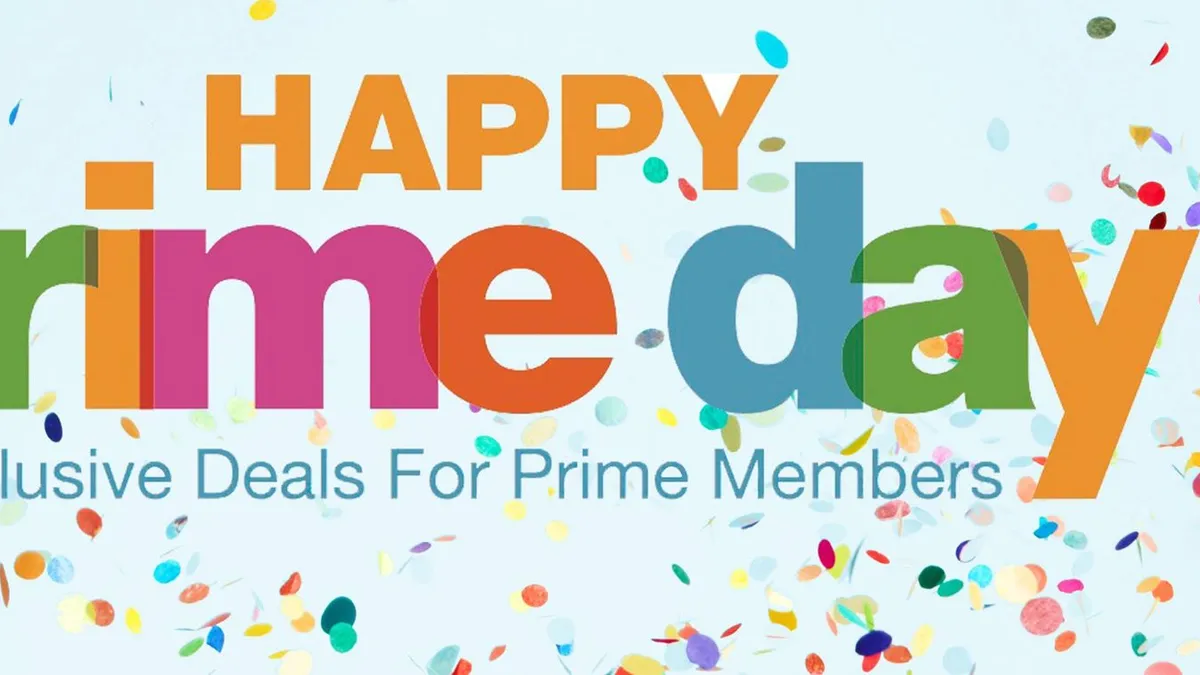Dive Brief:
-
Amazon has confirmed to Internet Retailer that it’s holding Prime Day again this year sometime in mid-July, though no date has been set. In April, Amazon told its Marketplace sellers to propose items for Prime Day “Lightning Deals”—special discounts that last six hours or “while supplies last”—by May 4.
-
Merchants selling on Amazon’s Marketplace are being advised to prepare for this year’s event by ensuring they have adequate inventory, are able to offer free shipping on non-Prime items, and have enough staff on hand for customer service, according to ChannelAdvisor.
-
Last year, traffic on Prime Day nearly doubled from the previous week’s average, with a peak at 7:00 a.m. of a factor of 2.5 as early risers checked out fresh deals, according to performance marketing platform HookLogic. Conversions grew 16% over the prior week, with an 11:00 p.m. peak as shoppers made last-minute purchases. HookLogic expects traffic and conversion to be higher this year.
Dive Insight:
Amazon’s first ever Prime Day paled in comparison to Alibaba’s $14 billion “Singles Day” juggernaut in November last year. Actually, no sales numbers have been released, although Amazon said Prime Day surpassed its Black Friday sales the year before by 18%, with sales 266% higher than July 15 the year before, according to Internet Retailer magazine.
That 266% mid-summer rise is part of what makes Prime Day a brilliant idea. There were some yawns from the press and disappointments from customers following Prime Day, centered mostly around out-of-stock issues and the fact that so many items on offer were run-of-the-mill products like shoe horns. But Amazon bills it as an anniversary celebration, a Black Friday-esque event at a time when shopping is not top of mind for consumers the way it is at back-to-school time or at the holidays.
“I see a lot of reports have come out saying that people haven’t got the deals they expected,” Shmuli Goldberg, marketing director at pricing platform FeedVisor, told Retail Dive last year. “But look at the amount of deals on Prime Day, in every single category. This wasn’t just Black Friday, with deals at the high end—televisions, mobile phones. The deals were spread through the whole range. And I believe that the reason Prime Day was what it was is that once Amazon gets a customer in, they’re a customer for life.”
Perhaps even more brilliant: Amazon also used the day to rack up more Prime members; Prime Day by definition is reserved for them. To access deals, customers must have had at least a trial membership.
“I think this is a real fantastic way for Amazon to make hay during the dog days of summer, that lull in retail between Father’s Day and ‘back to school,’” Rob Garf, a retail strategist with cloud-based e-commerce platform company Demandware, told Retail Dive last year. “This provides a way for Amazon to drum up demand and increase their Prime members. I could have reversed those—the major reason is not necessarily sales but to attract new customers.”
It's that drive to sign up more Prime members is the biggest reason many do consider Prime Day a success. Prime members are younger, wealthier, spend more, and are above all stickier than non-members. Amazon is working all kinds of levers to increase its Prime membership base, including not just Prime Day but also adding perks for members, from free television streaming to free delivery.














